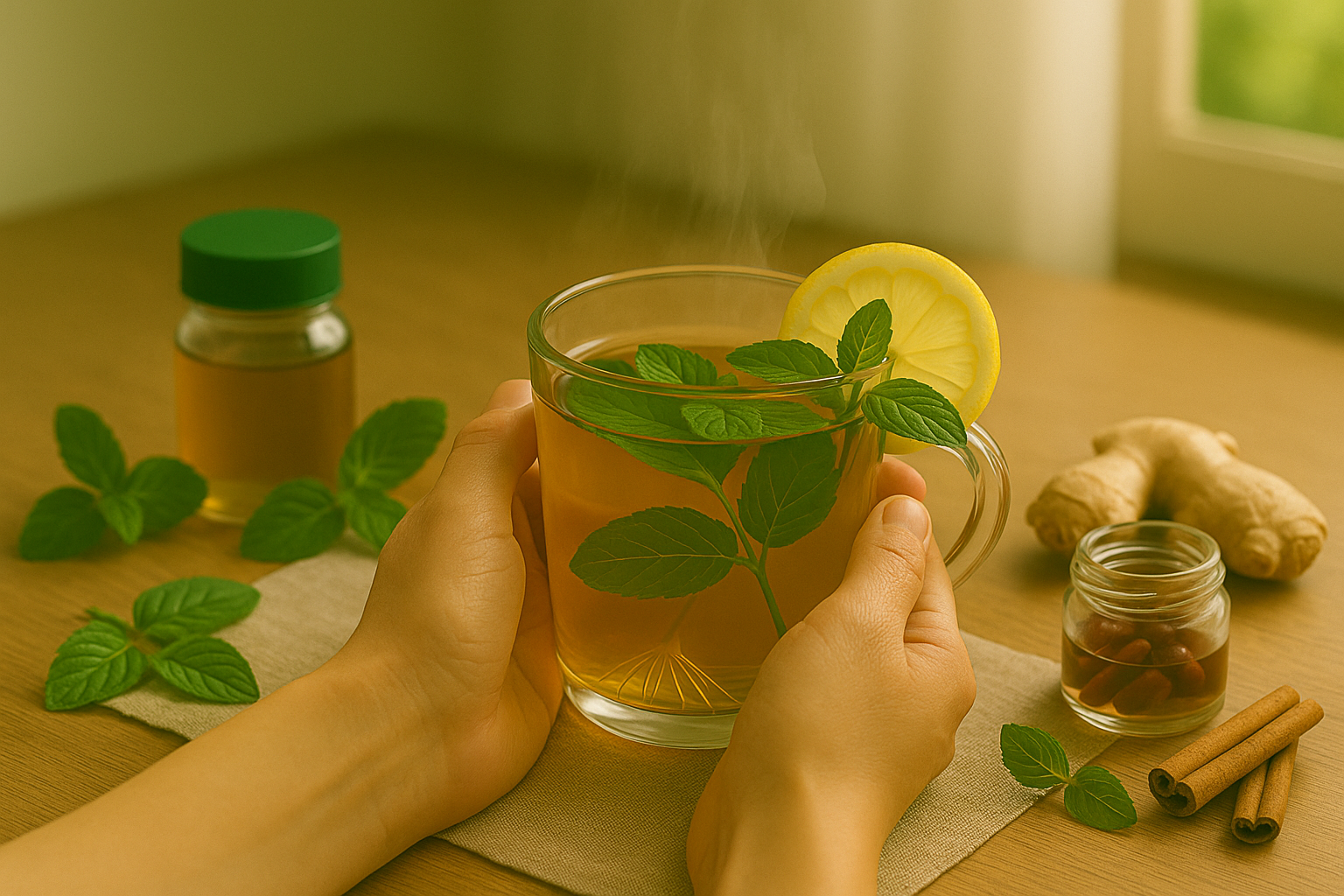Introduction
Fresh mint tea is a vibrant, aromatic drink made by infusing fresh mint leaves in hot water, celebrated for its cooling flavor and soothing qualities. Not only is it incredibly refreshing, but fresh mint tea is also packed with antioxidants and can aid digestion—making it both enjoyable and beneficial.
The best part? It’s surprisingly simple to prepare at home with just a handful of ingredients. In this guide, we’ll walk you through the easy steps to make the perfect cup of mint tea, share tips for getting the most flavor, and explore a few extra reasons to savor this naturally uplifting beverage.
Choosing and Preparing Your Mint
When making mint tea, start by picking the right variety—peppermint offers a bold, cooling flavor, while spearmint provides a milder, sweeter note. If you’re growing mint at home, harvest the leaves in the morning when their oils are most intense. Simply pinch off the top stems to encourage bushier growth and fresher leaves.
For store-bought mint, look for bright green bunches without yellow spots or wilted edges, and sniff for a strong, fresh aroma. Once you have your mint, rinse the leaves gently under cold water to remove dirt or pesticides. Pat them dry with a paper towel or use a salad spinner for larger batches.
If the stems are tough or woody, strip the leaves off before brewing. For the best flavor, lightly bruise the leaves by crushing them with your hands or a spoon to help release the natural oils before adding them to your teapot or mug.
Ingredients and Equipment

To make refreshing mint tea, start with fresh mint leaves and water—these are your essentials. For extra flavor, consider adding a slice of lemon, a bit of honey, or a few slices of ginger. Use a teapot or kettle to boil your water, and a sturdy mug to enjoy your drink. A fine mesh strainer is helpful for keeping leaves or ginger pieces out of your cup.
Choosing the freshest mint and high-quality optional add-ins really makes a difference, giving your tea a vibrant, aromatic flavor and a naturally soothing aroma that store-bought teas just can’t match.
Step-by-Step Method

To make the perfect cup of mint tea, start by boiling fresh, filtered water—aim for just below boiling, around 200°F (93°C), to prevent extracting bitterness from the leaves. While the water is heating, grab a handful of fresh mint or about 1 tablespoon of dried leaves per cup.
For a more robust flavor, gently bruise the mint leaves with your fingers before placing them in your teapot or mug. Pour the hot water over the mint and let it steep for about 5–7 minutes; shorter steeping equals milder tea, while longer infusion brings out a deeper flavor. But be careful—steeping too long or at too high a temperature can make it bitter.
If your tea tastes weak, simply add more mint or extend your steeping time next round.
For serving, strain the leaves and enjoy hot for a cozy experience, or cool your tea and then pour it over ice for a refreshing summer drink. Add honey or lemon if desired.
If the tea is too strong, dilute it with a splash of hot water. These simple adjustments let you tailor your mint tea to your taste and avoid common pitfalls like bitterness or blandness every time.
Variations and Serving Ideas

Get creative with your herbal tea by experimenting with different flavor twists. Add a splash of citrus like lemon, orange, or lime for a zesty pop, or toss in spices such as fresh ginger, cinnamon sticks, or a few whole cloves for warmth and depth. If you like a hint of sweetness, try a drizzle of honey, agave syrup, or a touch of maple.
Enhance with fresh herbs—think mint, basil, or even rosemary—for a refreshing finish. Enjoy your tea hot in a classic cup, or pour it over ice with sliced berries or cucumber for a cool, fruit-infused twist.
Herbal blends like chamomile mixed with green tea or hibiscus with black tea can open new flavors. For an elegant touch, serve in glass pots with floating herbs or citrus slices.
Herbal teas pair beautifully with light snacks—try them alongside scones, fruit salads, or mild cheeses for a delightful treat.
Health Benefits of Fresh Mint Tea

Fresh mint tea isn’t just refreshing—it’s packed with health benefits that make it a great choice for daily sipping. Research shows that drinking mint tea can help soothe your digestive system, easing symptoms like bloating, cramps, and indigestion after meals.
The menthol in mint has a calming effect on both the body and mind, making it a simple way to relax after a long day. Plus, mint tea is loaded with antioxidants, which help protect your cells from everyday stress and environmental damage.
Unlike many other teas, mint tea is naturally caffeine-free, so you can enjoy it any time of day without disrupting your sleep. It also fits perfectly into vegan, gluten-free, or low-sugar diets.
Just a quick note: while rare, some people may experience allergic reactions or mild sensitivities, especially if they already have allergies to plants in the mint family. So, start slowly if you’re new to mint.
Tips, Storage, and FAQs
To keep fresh mint vibrant, store it in a glass of water in the fridge with a loose plastic bag over the leaves—this will keep it fresh for up to a week. Extra tea, once cooled, can be refrigerated in a covered jar for two to three days; just give it a quick shake before drinking or gently reheat it on the stovetop, avoiding microwaves to preserve the flavor.
If you’re out of fresh mint, dried mint works well (use about one-third the amount). Don’t be afraid to experiment with different sweeteners, citrus slices, or even other herbs to craft your perfect cup.
